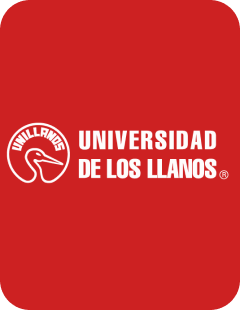Publicación: ESTAGIO “PASANTIA” DEPARTAMENTO DE REPRODUCCIÓN ANIMAL (VRA) LABORATORIO DE FISIOLOGÍA Y ENDOCRINOLOGÍA MOLECULAR (LFEM). (USP, CAMPUS FERNANDO COSTA- PIRASSUNUNGA, SAO PAULO-BRASIL) INFORME FINAL DE PASANTÍA FABIÁN DAVID CUELLAR CUADROS Cód. 121002508 UNIVERSIDAD DE
| dc.contributor.advisor | Director. Mario Binelli | spa |
| dc.contributor.author | CUELLAR CUADROS, FABIÁN DAVID | spa |
| dc.contributor.corporatename | Universidad de los Llanos | spa |
| dc.date.accessioned | 2017-10-17T18:36:01Z | spa |
| dc.date.available | 2017-10-17T18:36:01Z | spa |
| dc.date.issued | 2016-10 | spa |
| dc.description | 30 p. | spa |
| dc.description.abstract | Adquirir conocimiento y obtener experiencia, habilidades prácticas y técnicas en el trabajo de campo y laboratorio e iniciación en actividades de investigación en el Laboratorio de Fisiología y endocrinología Molecular | spa |
| dc.description.degreelevel | Pregrado | spa |
| dc.description.degreename | Medicina Veterinaria y Zootecnia | spa |
| dc.description.tableofcontents | 1. AGRADECIMIENTOS. ................................................................................. 5 2. OBJETIVOS. ................................................................................................ 6 2.1. Objetivo principal ........................................................................................ 6 2.2. Objetivos específicos .................................................................................. 6 3. INTRODUCCIÓN. ........................................................................................ 7 3.1. Contexto: .................................................................................................... 7 3.2. Justificación ................................................................................................ 8 4. REVISIÓN DE LITERATURA. ................................................................... 11 5. ACTIVIDADES DESARROLLADAS .......................................................... 15 5.1. Rutina del Laboratorio de Biología Molecular: .......................................... 15 5.2. Actividades en campo. .............................................................................. 15 5.3. Jornal Club semanal ................................................................................. 16 Discusión critica de artículos científicos “Discusión y delineamientos experimentales de los ensayos desarrollados en el Laboratorio. ....................... 16 5.4. Congresos y Simposios ............................................................................ 16 5.5. Conversatorios, Seminarios y Aulas con invitados internacionales. ......... 17 5.6. Capacitaciones y cursos. .......................................................................... 17 5.7. Proyecto de asistencia tecnica veterinaria al productor de leche de la region de Pirassununga. Ciclo de Seminarios teorico practicos-Hospital Veterinario ZMV-USP. ........................................................................................ 17 6. ANÁLISIS DE RESULTADOS. .................................................................. 19 7. CONCLUSIÓN Y RECOMENDACIONES .................................................. 20 8. APRECIACIÓN PERSONAL ..................................................................... 21 9. PUBLICACIONES Y CITACIONES: .......................................................... 22 10. BIBLIOGRAFIA ......................................................................................... 26 11. ANEXOS .................................................................................................... 30 4 LISTA DE FIGURAS Figura 1. Ubicación Laboratorio de Fisiologia y Endocrinologia Molecular....…7 Figura 2. Instalaciones del Laboratorio de Fisiologia y Endocrinologia Molecular (LFEM)……………………………………………………………………………...….7 Figura 3. Transcripción y traducción en células eucariotas….…………………11 Figura 4. Técnicas acompañadas en rutina de laboratorio………………….….15 Figura 5.Actividades desarrolladas y acompañadas a Campo………………...16 Figura 6. Equipo de trabajo LFEM………………………………………………….……..16 | spa |
| dc.format.mimetype | application/pdf | spa |
| dc.identifier.uri | https://repositorio.unillanos.edu.co/handle/001/429 | spa |
| dc.language.iso | spa | spa |
| dc.publisher | Universidad de los Llanos,2015 | spa |
| dc.relation.references | Binelli M, Scolari SC, Pugliesi G, et al. The transcriptome signature of the receptive bovine uterus determined at early gestation. PLoS One. 2015;10(4):1-13. doi:10.1371/journal.pone.0122874. 2. Berg DK, van Leeuwen J, Beaumont S, Berg M, Pfeffer PL. Embryo loss in cattle between Days 7 and 16 of pregnancy. Theriogenology. 2010;73(2):250-260. doi:10.1016/j.theriogenology.2009.09.005. 3. Daniel Givens M, Marley MSD. Infectious causes of embryonic and fetal mortality. Theriogenology. 2008;70(3):270-285. doi:10.1016/j.theriogenology.2008.04.018. 4. Pugliesi G, Santos FB, Lopes E, Nogueira É, Maio JRG, Binelli M. Improved fertility in suckled beef cows ovulating large follicles or supplemented with long-acting progesterone after timed-AI. Theriogenology. 2016;85(7):1239-1248. doi:10.1016/j.theriogenology.2015.12.006. 5. Kaloglu C, Onarlioglu B. Extracellular matrix remodelling in rat endometrium during early pregnancy: The role of fibronectin and laminin. Tissue Cell. 2010;42(5):301-306. doi:10.1016/j.tice.2010.07.004. 6. Van Hoeck V, Scolari SC, Pugliesi G, et al. Gene expression profiling by high throughput sequencing to determine signatures for the bovine receptive uterus at early gestation. Genomics Data. 2015;5:94-96. doi:10.1016/j.gdata.2015.05.030. 7. Dadarwal D, Mapletoft RJ, Adams GP, Pfeifer LFM, Creelman C, Singh J. Effect of progesterone concentration and duration of proestrus on fertility in beef cattle after fixed-time artificial insemination. Theriogenology. 2013;79(5):859-866. doi:10.1016/j.theriogenology.2013.01.003. 8. Peres RFG, Júnior IC, Filho OGS, Nogueira GP, Vasconcelos JLM. Strategies to improve fertility in Bos indicus postpubertal heifers and nonlactating cows submitted to fixed-time artificial insemination. Theriogenology. 2009;72(5):681-689. doi:10.1016/j.theriogenology.2009.04.026. 9. Bridges GA, Mussard ML, Burke CR, Day ML. Influence of the length of proestrus on fertility and endocrine function in female cattle. Anim Reprod Sci. 2010;117(3-4):208-215. doi:10.1016/j.anireprosci.2009.05.002. 10. Perry GA, Smith MF, Roberts AJ, MacNeil MD, Geary TW. Relationship between size of the ovulatory follicle and pregnancy success in beef heifers. J Anim Sci. 2007;85(3):684-689. doi:10.2527/jas.2006-519. 11. McNeill RE, Diskin MG, Sreenan JM, Morris DG. Associations between milk 27 progesterone concentration on different days and with embryo survival during the early luteal phase in dairy cows. Theriogenology. 2006;65(7):1435-1441. doi:10.1016/j.theriogenology.2005.08.015. 12. Ramos RS, Oliveira ML, Izaguirry AP, et al. The periovulatory endocrine milieu affects the uterine redox environment in beef cows. Reprod Biol Endocrinol. 2015;13(1):39. doi:10.1186/s12958-015-0036-x. 13. Sontag ED. Molecular Systems Biology and Control. Eur J Control. 2005;11(4-5):396-435. doi:10.3166/ejc.11.396-435. 14. Alberts B, Johnson A, Lewis J, et al. Molecular Biology of the Cell 6e. Vol 6.; 2014. doi:10.1002/1521-3773(20010316)40:6<9823 | spa |
| dc.rights | Universidad de los Llanos, 2015 | spa |
| dc.rights.accessrights | info:eu-repo/semantics/openAccess | spa |
| dc.rights.coar | http://purl.org/coar/access_right/c_abf2 | spa |
| dc.rights.creativecommons | Atribución 4.0 Internacional (CC BY 4.0) | spa |
| dc.rights.uri | https://creativecommons.org/licenses/by/4.0/ | spa |
| dc.subject.proposal | FISIOLOGÍA Y ENDOCRINOLOGÍA MOLECULAR | spa |
| dc.title | ESTAGIO “PASANTIA” DEPARTAMENTO DE REPRODUCCIÓN ANIMAL (VRA) LABORATORIO DE FISIOLOGÍA Y ENDOCRINOLOGÍA MOLECULAR (LFEM). (USP, CAMPUS FERNANDO COSTA- PIRASSUNUNGA, SAO PAULO-BRASIL) INFORME FINAL DE PASANTÍA FABIÁN DAVID CUELLAR CUADROS Cód. 121002508 UNIVERSIDAD DE | spa |
| dc.type | Trabajo de grado - Pregrado | spa |
| dc.type.coar | http://purl.org/coar/resource_type/c_7a1f | spa |
| dc.type.coarversion | http://purl.org/coar/version/c_970fb48d4fbd8a85 | spa |
| dc.type.content | Text | spa |
| dc.type.driver | info:eu-repo/semantics/bachelorThesis | spa |
| dc.type.redcol | https://purl.org/redcol/resource_type/TP | spa |
| dc.type.version | info:eu-repo/semantics/publishedVersion | spa |
| dspace.entity.type | Publication |
Archivos
Bloque original
1 - 1 de 1
Cargando...
- Nombre:
- RUNILLANOS MV 0835P....
- Tamaño:
- 1.1 MB
- Formato:
- Adobe Portable Document Format
- Descripción:
- La misión de este laboratorio es formar en competencias y realizar investigación de excelencia para aplicar conocimiento sobre la biología de la reproducción animal. Para esto el LFEM actúa en la elucidación de los mecanismos endocrinos, celulares y moleculares que controlan procesos reproductivos en hembras de especies domésticas.
Bloque de licencias
1 - 1 de 1
Cargando...

- Nombre:
- license.txt
- Tamaño:
- 1.71 KB
- Formato:
- Item-specific license agreed upon to submission
- Descripción:

